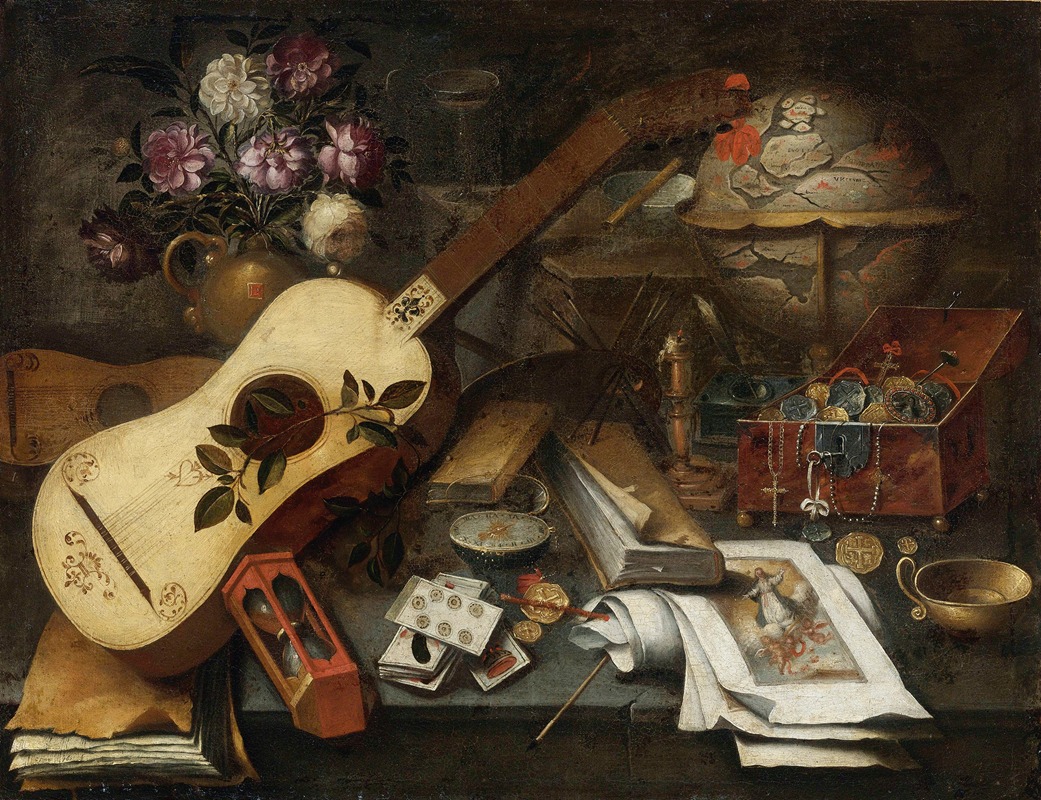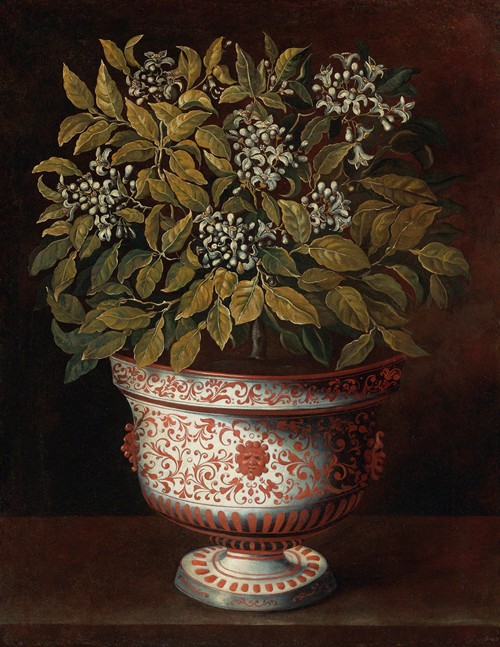
Tomás de Yepes or Hiepes was a Spanish painter in the Kingdom of Valencia. An artist of the Baroque movement, he worked as a painter of still life and bodegón—still life paintings depicting pantry items. He made paintings both for clients and public events. Although his activity started in the second decade of the 17th century, most of the works attributed to him come after 1642. He continued to paint until the year of his death.
Yepes' depictions of flower vases, fruits (particularly grapes), and everyday objects were prominent in the region during the 17th and 18th century, and he has been regarded as one of the major rediscoveries of art history. He is best known for his distinctive style of flower painting that he focused on throughout his career. His paintings are exhibited in museums and in private collections worldwide, with Museo del Prado hosting the most extensive collection of his works.
Yepes was born to Pascual Tomás Yepes and Vicenta Pujades or Puchades in 1595 or 1600. Although art historians have been unable to ascertain whether he was born in the city of Valencia—where he was active during his career—he is considered to have been born in the Kingdom of Valencia.
Not much is known about Yepes' life outside of his paintings. He enrolled at the Colegio de Pintores de Valencia (College of Painters of Valencia) in October 1616. By 1630, he was in a commercial deal with Medina del Campo and his paintings were sold at the town's various fairs. Yepes had an elder sister, Vicenta, who owned a confectionery. In 1631, she filed a lawsuit against Yepes demanding payment of old debts, which her brother settled with delivery of a few religious paintings.
Yepes was married to Ana Eres or Heres, a scion of a wealthy Valencian family; her family also owned properties that were rented out in Algemesí. After the death of her brothers, Eres declared herself to be the sole heiress of the family on 4 July 1635. Yepes' father-in-law Gaspar Eres worked as a carpenter at the fairs; Yepes and Gaspar Eres collectively received 220 Valencian pounds from Medina del Campo in 1635.
Yepes also did paintings for clients. In 1632, he sold some of his fruit paintings for eight Valencian pounds to his notary Vicente Cortés. On 4 December 1633, he signed a deal worth 13 pounds and 10 wages with the merchant Juan Ruiz for a supply of fabric and cloth to be used for his paintings. On 2 August 1638, Simón Colomer received eight canvases from Yepes, fulfilling an order Colomer had placed in 1637.
William B. Jordan points to gaps in the timeline and life of Yepes; although he was active by the second decade of the 17th century, most of the works attributed to him come after 1642. In 1655, his paintings were displayed in the Convent of Santo Domingo during the second centenary of the canonization of Saint Vincent Ferrer. Yepes mainly chose to paint flower vases and fruits, for which he was known across the kingdom.
Like Francisco Pérez Sierra, Yepes grew different varieties of flowers in his backyard to use for his paintings. He continued to paint through the 1660s, and his signed works have been found dated up to the year of his death. Yepes died in Valencia on 16 June 1674, and was buried at the Church of San Esteband.
